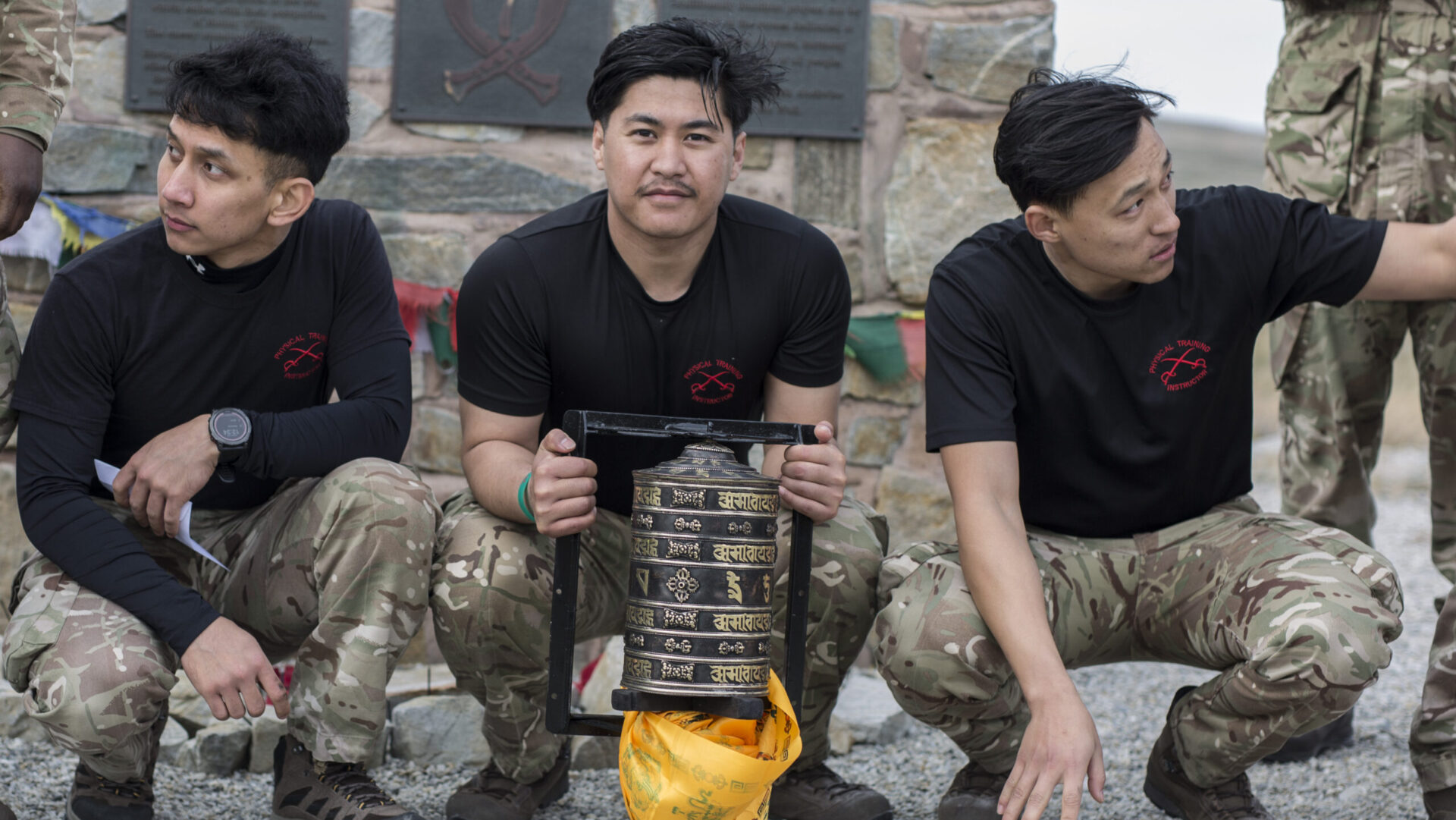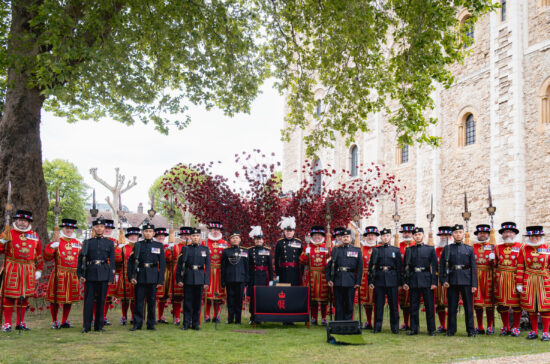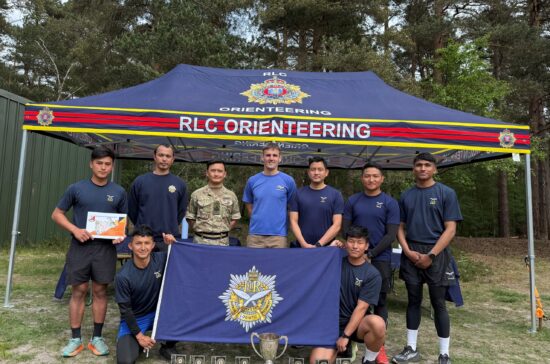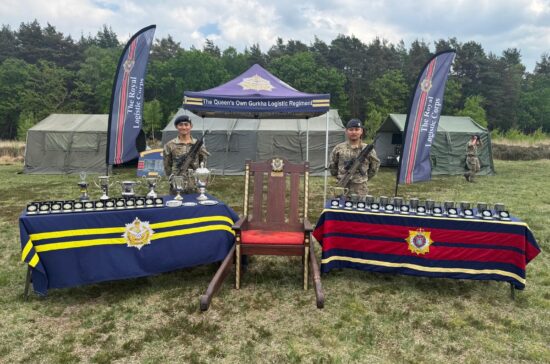On 29 March 2025, a team of 16 individuals from British Forces South Atlantic Islands marched from Mount Pleasant Complex (MPC) to the Gurkha Memorial. This event mainly aimed to raise funds to buy a prayer wheel which was to be installed at the back of the Gurkha Memorial.
Background. On 9 February 2025, the MPC basketball team was on their way to Stanley to play a friendly basketball match with the locals. During our journey, I came across a mysterious monument near the quarries. Out of curiosity, I went to check it and coincidently, it was a Gurkha Memorial for the 7th Duke of Edinburgh’s Own Gurkha Rifles (7 GR). It was unveiled by the 7 GR veterans in 2019, who were deployed during the Falklands war in 1982. Upon closer inspection, the plaque revealed that this particular memorial represented the Buddhist culture, and it is obligatory to go round this holy monument in a clockwise direction to show respect. Having been to many of these similar Buddhist monuments, I have witnessed the presence of a prayer wheel (also known as ‘mani’) almost everywhere. This Gurkha Memorial did not have one and it was bothering me. I felt the memorial was a incomplete. I wanted to put up a prayer wheel at the back of the memorial and hence the idea of this project came about.
1/7th GR Gurkha Memorial in the Falklands.
The prayer wheel (mani). The prayer wheel is a cylindrical drum which is fixated on spindle. It has mantras inscribed on the cylindrical surface and when it is rotated on a clockwise direction (must) it is believed that the holy mantras are released into the world. In other words, spinning the mani is referred to as if one is reciting the mantras themselves. In a way, attaching the mani to the memorial will allow the visitors to recite mantras to our forefathers and all those who lost their life during the Falklands war, granting them forever peace in afterlife. In addition to that, it is well known that the mani is the symbol of peace and spirituality. Installing this will only enhance the importance of the Gurkha memorial.
The Journey. Since the mani wall is only found it the Himalayas of Nepal, it won’t be wrong to say that this Gurkha memorial is actually a part of Nepal which was brought to Falklands. It also represents the journey of the Gurkhas from Nepal to Falklands and like the memorial itself, some were destined to stay here forever as a testament to the upcoming Gurkha generation, fostering pride and courage in them. For this reason, I was determined to have the hand-made prayer wheel in Nepal.
The planning and execution. It is said that any project needs an idea first then must have the courage to start. I had the idea but was not so sure about the courage to commit. There were lots of things that could go wrong and the whole project would be a complete failure. I had self-doubt on myself as well, but fortunately I had my seniors from the Falklands Nepalese Community from whom I got the suggestions, guidance and most importantly the courage to carry on with my project. Without their immense support, one thing I can say was that the project would only exist in my head.
The first part of the project started when I had comms with my good school friend Saran, who lives in Kathmandu. Him being a very helpful person, he agreed to help me make a prayer wheel, without any questioning and without any hesitation. Only because of his efforts and running round the capital city on his own, the prayer wheel was made according to my vision and just in time. Then the prayer wheel was couriered to UK, then onto the Falklands.
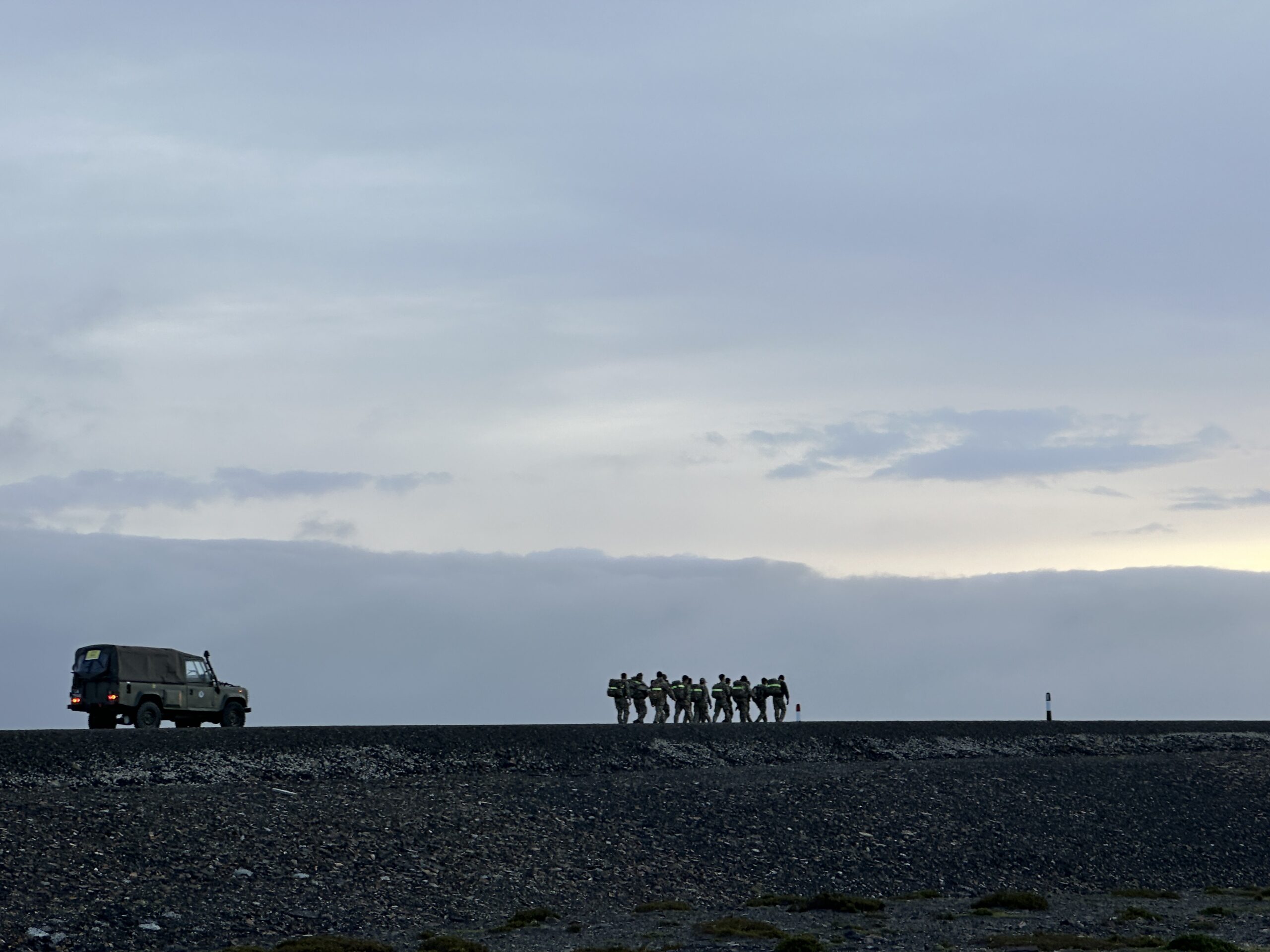
D-Day. On 29 March, everyone gathered at the start point at 0630hrs. Then after the event introduction by myself, memorial history by Tulsi, safety brief by Yukesh and mobility check by Jalan, the last journey of the prayer wheel towards its resting place commenced. The route extended from MPC to the Gurkha Memorial for 46 km and our team of 16 carried an average load of 30lbs. The route was divided into five checkpoints. Every individual involved in the tab got a chance to carry the ‘mani’ at least once, so that they can have personal pride in this project.
Up to check point (CP) 1 everyone was talking, laughing and cracking jokes, with no signs of fatigue. Up to CP2, less laughing, but the talking was there. A few visible signs of fatigue, cramps and blisters started to creep in. Up to CP3, no laughing and barely anyone was talking, so the speakers came out to play music. Up to CP4, it was only music and sounds of the troops tabbing. Nothing except waving back at the passing vehicles. Visible signs of annoyance, fatigue, minor injuries now common across the team. Up to CP5, the music was turned off and the speaker handed over to support staff, as it was just extra unwanted weight for the person who was carrying it. At this point, everyone had adapted to a new walking style, with stiff legs that refused to bend. We named it ‘the pain-guin walk’. After CP5, the last stretch to our final destination was insight, and we covered the distance comparatively fast. We were welcomed by supporters, and it literally meant the world to us. All the pain and grit finally seemed to have some worth when we were applauded as we arrived.
After two long months of planning and execution, the prayer wheel was finally installed at the back of the Gurkha Memorial. This could not have been possible without the immense support of the FNC and the funds that were mostly contributed by the generous Falkland islanders. The funds raised will be donated to the MPC School and the Gurkha Welfare Trust who work tirelessly to best facilitate our future and the past generations.



